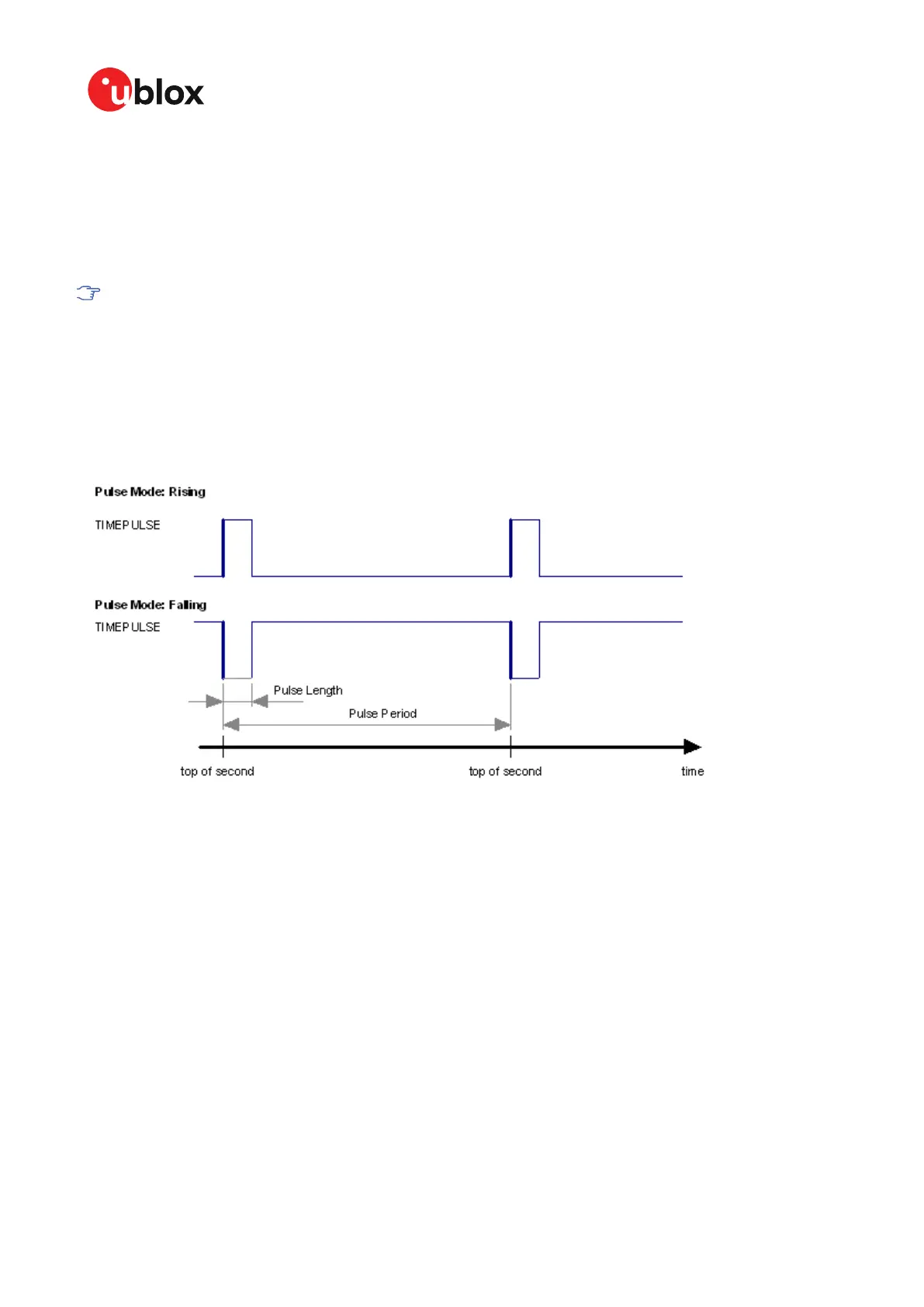ZED-F9R-Integration manual
The following example illustrates how this works: Assume that the reference rollover week number
set in the firmware at compile time is 1524 (which corresponds to a week in calendar year 2009,
but would be transmitted by the satellites as 500). In this case, if the receiver sees transmissions
containing week numbers in the range of 500 ... 1023, these will be interpreted as week numbers
1524 ... 2047 (calendar year 2009 ... 2019), whereas transmissions with week numbers from 0 to
499 are interpreted as week numbers 2048 ... 2547 (calendar year 2019 ... 2028).
It is important to set the reference rollover week number appropriately when supplying u-
blox receivers with simulated signals, especially when the scenarios are in the past.
3.10.10 Time pulse
3.10.10.1 Introduction
u-blox receivers include a time pulse function providing clock pulses with configurable duration and
frequency. The time pulse function can be configured using the CFG-TP-* configuration group. The
UBX-TIM-TP message provides time information for the next pulse and the time source.
Figure 23: Time pulse
3.10.10.2 Recommendations
• The time pulse can be aligned to a wide variety of GNSS times or to variants of UTC derived
from them (see the section on time bases). However, it is strongly recommended that the
choice of time base is aligned with the available GNSS signals (so to produce GPS time or
UTC(USNO), ensure GPS signals are available, and for GLONASS time or UTC(SU) ensure
the presence GLONASS signals). This will involve coordinating the setting of CFG-SIGNAL-*
configuration group with the choice of time pulse time base.
• When using time pulse for timing applications requiring absolute time accuracy, e.g. with
requirements specifying offset to UTC, it is recommended to calibrate the user's full setup for
TP output against a reference timing source. To achieve best absolute and consistent accuracy
(e.g. for mass deployment), it is recommended that the user should calibrate each single setup
and calibrate under different GNSS modes and different temperatures which are applicable to
the user's application and operating requirements. The user should take the calibrated values
and configure the compensation accordingly (see the section on Time pulse configuration)
•
To get the best timing accuracy with the antenna, a fixed and accurate position is needed.
• If relative time accuracy between multiple receivers is required, do not mix receivers of different
product families. If this is required, the receivers must be calibrated accordingly, by setting
cable delay and user delay.
UBX-20039643 - R06
3 Receiver functionality Page 70 of 119
C1-Public
